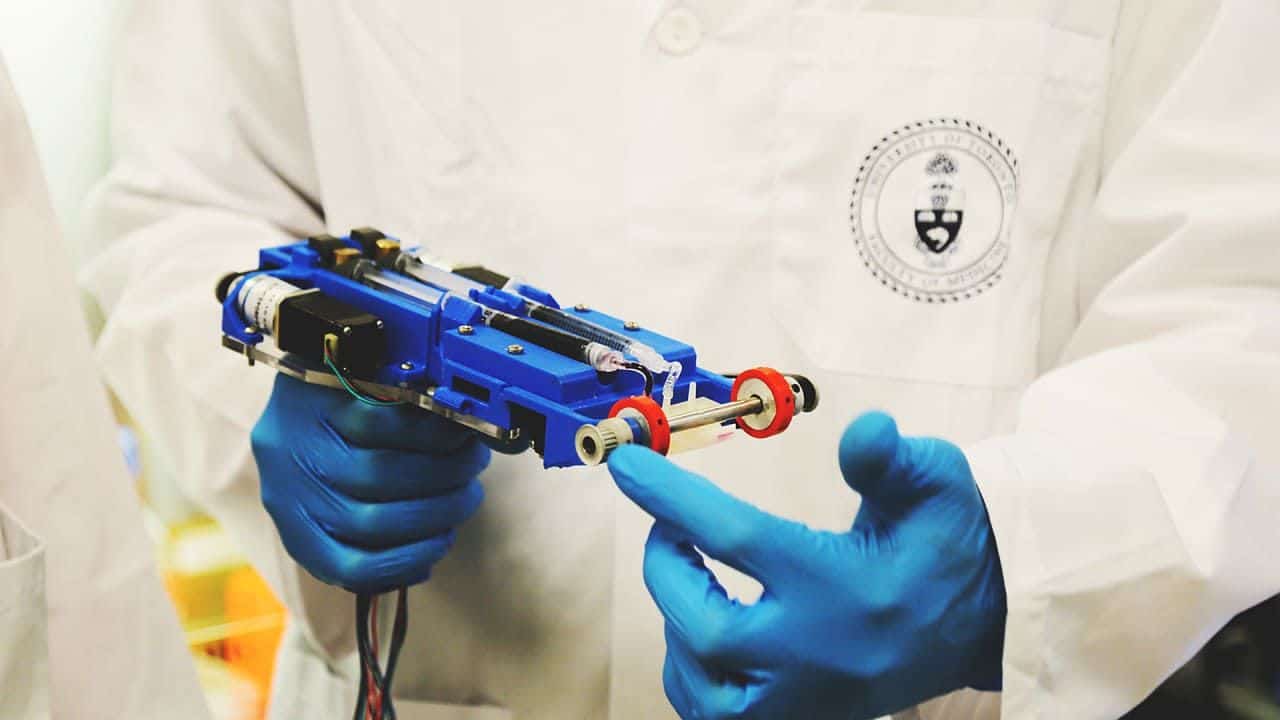Every day science makes medical discoveries that can change our life. And now scientists have created a portable printer that corrects damaged skin due to injuries such as extreme burns.
in 2017 Spanish scientists from the Carlos III University of Madrid (UC3M), Center for Energy, Environmental and Technological Research (CIEMAT) have created a special, large bioperinter that prints human skin.
in 2018, a Canadian team has begun research into a portable device that “prints” sheets of artificial skin directly onto the wounds of burn victims.
“It's like a duct tape dispenser,” said the researcher Axel Gunther. “Instead of a roll of tape you have a microdevice that delivers a piece of fabric.”
Canadian scientists recently published the encouraging results of their latest portable device test in the Biofabrication magazine. Doctors currently have several options for treating severe burns including collagen scaffolds, in vitro skin substitutes and skin grafts.
Today we "transplant" skin from one part of the body to another
The most commonly used method is skin grafting: involves removing damaged tissue and replacing it with healthy skin from another part of the body. But grafts are not always a viable option.
In cases where a patient has severe third-degree burns that destroy both the upper and lower layers of the skin, sufficient healthy skin is not always sufficient to use.
Alternative treatments of burns such as collagen scaffolds and in vitro skin substitutes have other downsides.
Print the skin directly on the wounds
These are the reasons why the team created a device that eliminates the need for skin grafts by depositing strips of a special bio-ink directly on a wound. The bio-ink contains healing proteins and stromal mesenchymal cells that help the immune system and stimulate the growth of new cells.
For the experimentation, the scientists tested the skin printing device in third-degree burns on pigs and were very impressed with the results.
“We found that the device successfully deposited the 'skin sheets' onto the wounds evenly, safely and reliably, and that the sheets stayed in place without shifting” said the researcher Marc Jeschke.
“More significantly, our results showed that wounds treated with mesenchymal stromal cell-based skin printing healed very well. The reduction in inflammation, scarring and shrinkage compared to both untreated wounds is notable. Skin printing also provides better results than collagen scaffolds.”
Skin print: absolute importance
in 2016 Harvard researchers created the first 3D printed heart-on-a-chip with integrated sensing. IS in 2019 that research was improved by Israeli scientists who got the first 3D printed heart with human tissues and vessels. That was the first ever use of bio-ink. The future begins now.
This new skin can also be used in research and testing of cosmetics, chemicals and pharmaceuticals. There is a dire need, given that even the apparently non-invasive ones (like sunscreen) have effects on the body.


